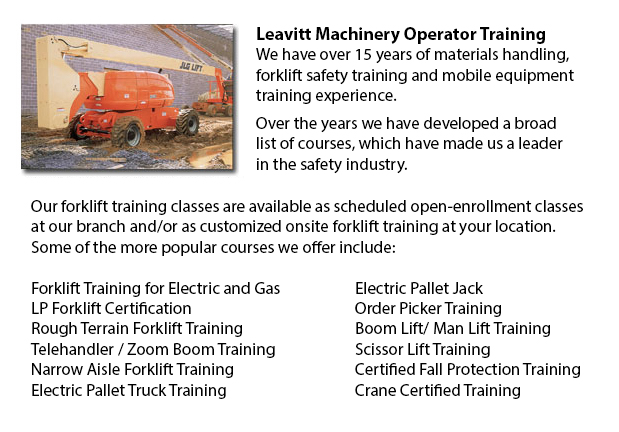
Kamloops Boom Lift Operator Training - A cherry picker is a kind of aerial work platform. Cherry pickers have a platform or bucket at the hydraulic lifting system's end. The machine is likewise referred to as a man lift, boom lift, hydraladder or basket crane.
The bucket or platform is normally mounted on the back of a big vehicle such as a truck, which is sometimes called a bucket truck. A self-moving platform, stand-alone trailer or flat back pickup van could also be utilized. The individual working stands inside the bucket and works from there. The individual in the bucket usually includes an upper set of controls allowing manipulation of the bucket's position. The reach of the bucket could be lengthened on some models by telescoping to adjust the lifting arm. Safety controls which are automatic prevent tipping. Articulated boom lifts are suggested when it is required to clear obstacles or for working in tight spaces.
Cherry pickers, as the name implies, were originally constructed for picking fruit in trees at high levels. These machines are often used in different industries like for example exterior painting, construction and mining. Occasionally they are utilized for cleaning windows on high rise. The machines are utilized to service cable television, electrical equipment and telephone on utility poles. Fire fighters sometimes use cherry pickers, called snorkels, when ladders are insufficient. At Christmas time, civic workers can be seen within cherry pickers hanging banners and lights.
Boom Lift Operator Safety Training
The industry recommends Safety Awareness Training meets standards set by your local regulations. Curriculum includes safe operation methods through a combination of hands-on and classroom components.
The following topics are covered: current regulation and applicable issues; general equipment safety factors; fall protection; features of boom lifts, scissor-lifts and various stationary work platforms.
Also included are the various lift operator's responsibilities, like for example: workplace checks; function test procedures; knowing and avoiding dangers; pre-operation check procedures; and equipment manufacturer's instructions.
-
Kamloops Counterbalance Forklift Training
Kamloops Counterbalance Forklift Training - Counterbalance Forklift Training courses are always in high demand. The Counterbalance forklift is a forklift which is made with a weight which counters the balance, equally spreading the weight of the load... More -
Kamloops Manlift Certification
Kamloops Manlift Certification - The Manlifts and Elevated Platforms program offers training on the rules, regulations and proper application of safe operating measures and work practices included in daily activities for people who work making use of... More -
Kamloops Boom Lift Training
Kamloops Boom Lift Training - Elevated work platforms, likewise referred to as aerial platforms, allow workers to carry out tasks at heights that will otherwise be not reachable. There are various styles of lifts designed for different site applicati... More -
Operator Safety Certification | Re-Qualification Certification | In-House Instructor Certification in Kamloops
Forklifts are used in just about all industrial construction sites and in warehouse operations and in boat yards. The reach feature of a lift truck is a vital component used in several applications like for instance when a shelving system is being us... More -
Kamloops Manlift Safety Training
Kamloops Manlift Safety Training - It is essential for competent Manlift operators to be aware of the connected dangers that come with particular kinds of scissor lifts. They must be able to operate the scissor lift in a way that protects not only th... More -
Kamloops Crane Training Schools
Kamloops Crane Training Schools - We have designed several programs for Mobile Crane Operation at our Crane Training Schools. These programs are recommended for the experienced operator who requires certification or re-certification, and for inexperi... More -
Skid Steer Loader Certification in Kamloops
The engine powered skid-steer loader consists of a rigid and small frame, outfitted together with lift arms which could attach to a lot of industrial attachments and tools to perform several labor saving jobs. Typically, skid-steer loaders are four-w... More -
Kamloops Heavy Equipment License
Kamloops Heavy Equipment License - A heavy equipment license could be acquired by taking a certification and preparation course at a private training school or a vocational school. This license would qualify you to operate various types of heavy mach... More

Forklift Certification Kamloops
TOLL FREE: 1-888-254-6157
Kamloops, British Columbia
forkliftcertificationkamloops.com/
Email Us
About Us


